Santiago de Compostela
Top-Rated Attractions in Santiago de Compostela
Written by Lisa Alexander
Pilgrims once traveled on months-long journeys by foot from all over Europe to visit the relics of Saint James (known in Spain as Santiago), which were housed within the cathedral. During the Middle Ages, this sacred city was equal to Jerusalem and Rome as a pilgrimage destination, and the route by which visitors came is known as the Way of St. James. Still one of the most revered shrines in Christendom, Santiago de Compostela continues to draw modern-day spiritual pilgrims but also offers a wealth of attractions for tourists.
No matter how you arrive, Santiago de Compostela is a rewarding destination at the heart of the beautiful Galicia region. The historic center is a designated UNESCO World Heritage Site, and the magnificent Cathedral of Santiago is one of the most outstanding monuments in Spain. The city also offers several museums, and is in a convenient location for those who want to explore Spain's west coast.
Discover more things to do with our list of the top attractions in Santiago de Compostela.
1. Catedral de Santiago
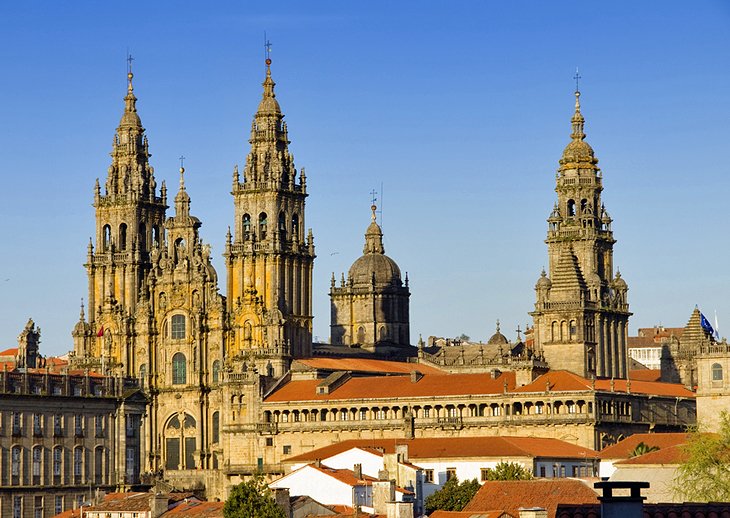
Catedral de Santiago
The most sacred Christian monument in Spain, the Cathedral of Santiago de Compostela is a sight worthy of an arduous pilgrim's journey. The cathedral stands majestically on the Plaza del Obradoiro, with its towers soaring above the town. An outstanding example of Early Romanesque architecture, the building was constructed between 1075 and 1211 on the site of an earlier 9th-century church that was destroyed in 997 by Almansor's Moorish army.
The cathedral was renovated numerous times in different architectural styles, including Gothic, Plateresque, and Neoclassical. Welcoming pilgrims is a splendid entrance called the Portico de la Gloria. Created by Master Mateo in 1188, this doorway is a profusion of sculpture featuring 200 figures from the Apocalypse story and the figure of Saint James the Apostle. The Obradoiro Facade (facing the square) was created by Fernando de Casas y Novoa. This lavish facade is considered to be the finest example of Spanish Baroque style.
The cathedral's grand first impression sets the stage for an inspiring spiritual experience. Enter the serene sanctuary, a grandiose space of three naves with an astounding surface area of about 8,300 square meters. Directly beneath the opulent Baroque main altar is the main draw for all pilgrims to Santiago, the Crypt of Saint James the Apostle, patron saint of Spain.
The Fiesta de Santiago (Festival of Saint James) is held every year that July 25th falls on a Sunday, considered a Holy Year feast day. The Capilla de las Reliquias, the first chapel in the south aisle, contains tombs of kings and queens of the 12th to 15th centuries. Beyond the south transept to the right of the Puerta de las Platerías is a gorgeous 16th-century Plateresque cloister, one of the largest and finest in Spain.
Located within the westernmost section of the cloister, the Cathedral of Santiago de Compostela Museum houses numerous exhibits, which explore the history of the cathedral. Among these are archaeological exhibits and an account of the changes that the site has seen in its various incarnations; additional exhibits delve into various art forms, including painting, sculpture, and decorative items, as well as a large area devoted to tapestries and textiles.
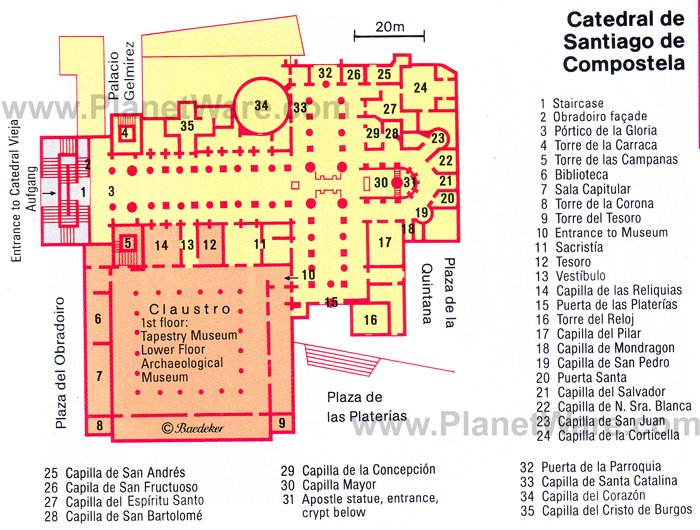
Catedral de Santiago de Compostela Map
2. Hostal de los Reyes Católicos
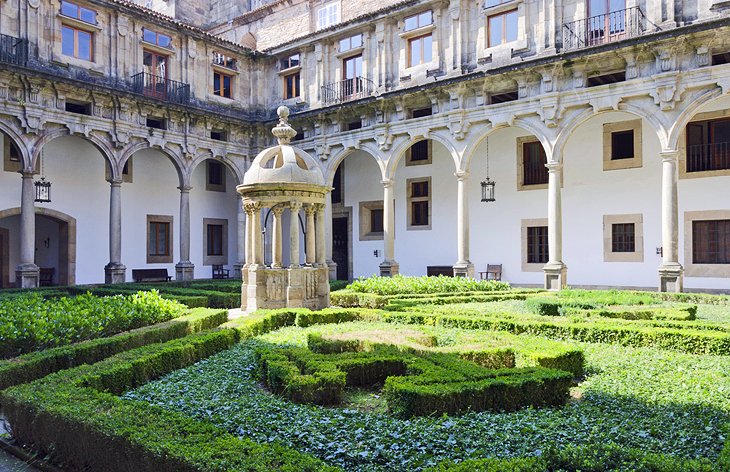
Hostal de los Reyes Católicos
This former pilgrims' hostel is a splendid example of Gothic Plateresque architecture, with a decorative facade and four interior courtyards. In 1499, the Catholic Monarchs created a lovely place of lodging for weary pilgrims who had journeyed from far and wide on the Way of Saint James trail. It's easy to imagine the joy travelers must have felt when they reached this beautiful destination.
Continuing the tradition of hospitality, the historic building has been renovated and converted into a luxurious Parador hotel. Guests will enjoy the comfortable rooms and regional Galician cuisine served at the hotel's gourmet restaurant. Visitors may also continue their spiritual journey by worshiping at the lovely chapel here, the Capilla de Enrique de Egas.
3. Plaza del Obradoiro
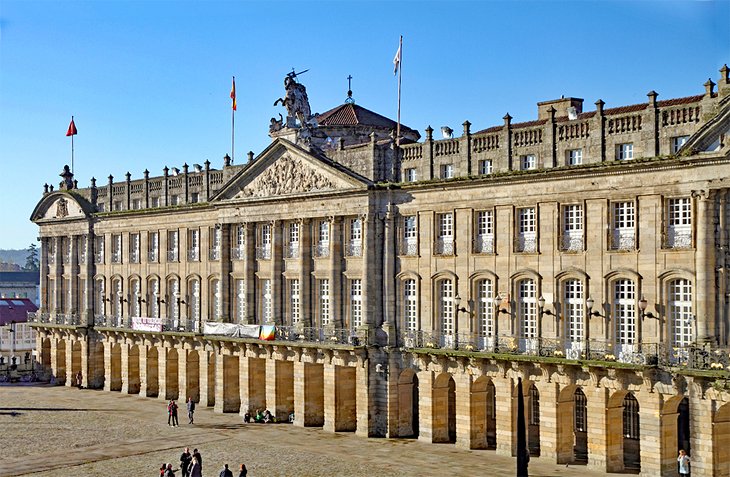
The Cathedral of Santiago de Compostela forms the east side of the Plaza del Obradoiro, a large pedestrian square that represents the heart of the Casco Antiguo (old town). The plaza's name, which translates to "Workshop Square," originates from the time when the cathedral was being built—for years, numerous stone masons worked here while constructing the edifice we see today.
This grand square is boxed in by three other historic landmarks, including the Hostal de los Reyes Católicos to the north; Pazo de Raxoi (Santiago City Hall) to the west; and the 17th-century Colegio de San Jerónimo, which is now a part of Santiago University, to the south. Next door to the cathedral, the Monastery of San Martiño Pinario is another landmark building with a rich history.
4. Camino de Santiago and Museo das Peregrinacións
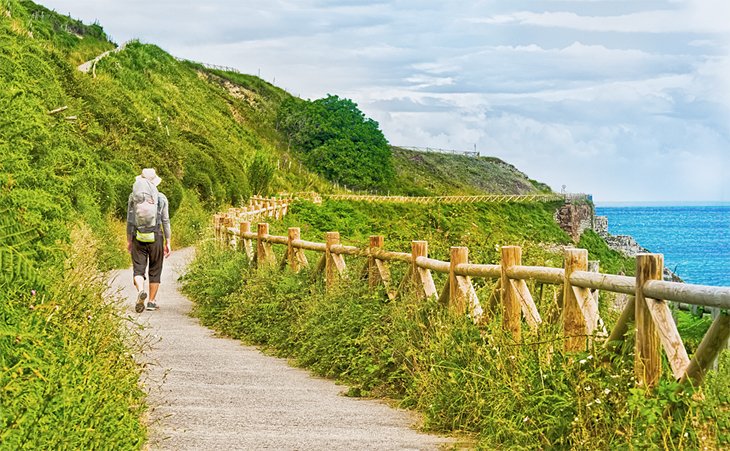
The Camino de Santiago is the name for the pilgrimage trail to Santiago de Compostela. This important medieval pilgrimage began in the 9th century with various routes, also known as the Way of Saint James, originating all over Europe. Pilgrims set out on this walk with the goal of venerating the saint's tomb in Santiago.
During the High Middle Ages, a pilgrimage culture flourished, and splendid Romanesque churches were built at key stopping points along the way. The pilgrims' symbol is the scallop shell, and historic sites related to the Camino de Santiago are indicated with a shell icon. Modern day pilgrims tie the scallop shells to their backpacks.
The Museum of Pilgrimages allows visitors to discover the fascinating history of the pilgrims of Saint James. The museum explains the importance of the Saint James' relics to the pilgrims, and illustrates the cult of Saint James through ancient artifacts and religious objects. Historical information details the origin of Jacobean worship, beginning with the archaeological transfer of the Saint's apostolic body (relics) from Jaffa in the Holy Land to Libredón, the name of the hilltop site that is now part of Santiago de Compostela.
Exhibits also show the influence of pilgrimages on the development of Santiago de Compostela's artistic crafts guilds. The museum has two sites: One is located on Calle de San Miguel and another at Plaza de las Platerías, the square facing the cathedral.
5. Casco Antiguo (Old Town)
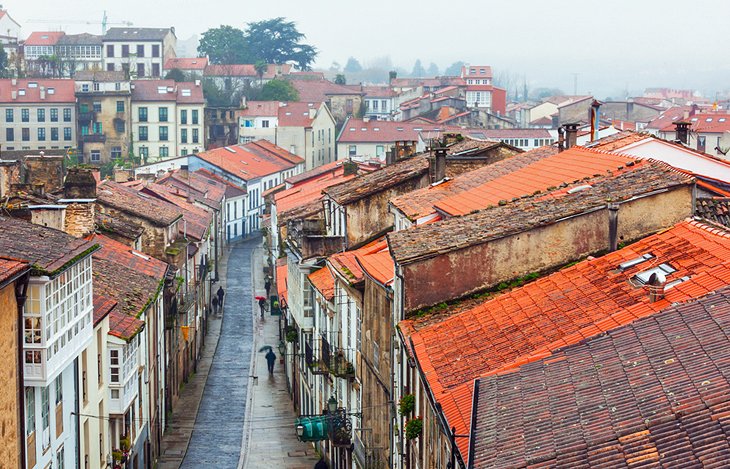
Casco Antiguo (Old Town)
Listed as a UNESCO World Heritage Site, the atmospheric Old Town of Santiago extends south of the cathedral and the Plaza de las Platerías. At the center are two parallel streets, the Rúa Nueva and the Rúa del Villar with the 18th-century Casa del Deán at its near end. These two arcaded streets are the hub of the town's life and are filled with cafes, restaurants, and boutiques. Tourists will enjoy strolling around these charming pedestrian streets.
Much of the Casco Antiguo and the area around the cathedral is closed to automobile traffic, adding to the quaint old-world ambience.
6. Parque Alameda
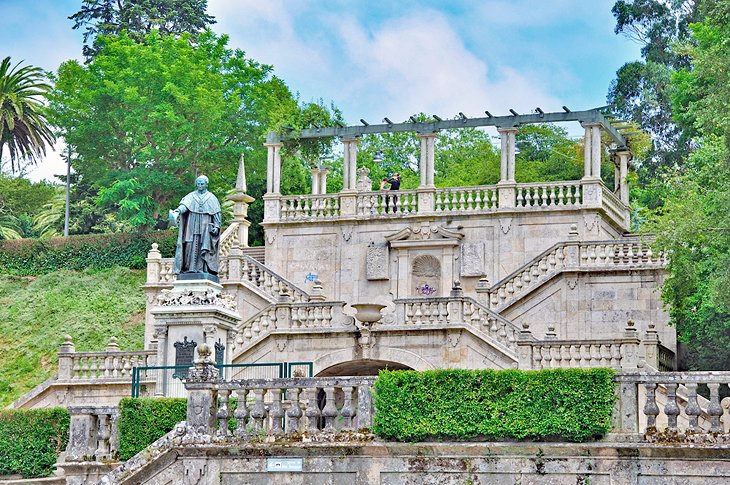
Alameda Park is Santiago de Compostela's most popular park, a beautiful landscaped public space located adjacent to the old town. One of the park's most well-known features is its botanical gardens, containing more than 90 species of ornamental flora, and the park hosts many events throughout the year.
For two centuries, this has been residents' favorite place to take a stroll, a fact memorialized by the Monument to As Marías, a sculpture of two sisters who once took their afternoon walk here each day at 2pm. Among other monuments, the park is home to the Gardens of Méndez Núñez Monument, a 1917 monument to the poet Rosalía de Castro, and statues honoring other important Galician figures. There is also a 17th-century chapel, the Church of El Pilar (built in 1717), and the famous Porta dos Leóns (Lions door), carved in 1835.
7. Centro Galego de Arte Contemporaine
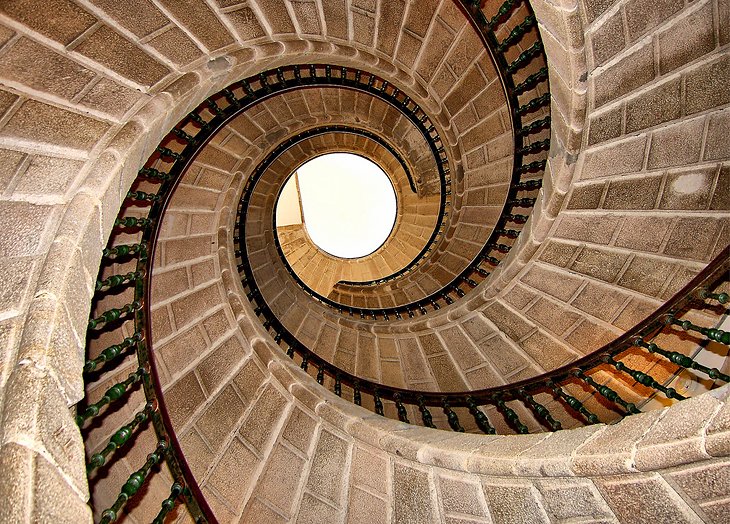
Centro Galego de Arte Contemporaine | Jose Luis Cernadas Iglesias / photo modified
The Galician Contemporary Art Centre offers a wonderful insight into the modern-day culture of the region. The center is dedicated to contemporary Galician art, which is displayed in sleek exhibition halls. Next to the historic San Domingos de Bonaval Convent, the center occupies a stunning modern building designed by Portuguese architect Alvaro Siza.
From the building's terraces, visitors can take in stunning views of the historic quarter. Part of the property includes a lovely park that belonged to the neighboring convent. In addition to the permanent collection, the center also hosts temporary exhibits related to trends in art.
8. Casa do Cabildo
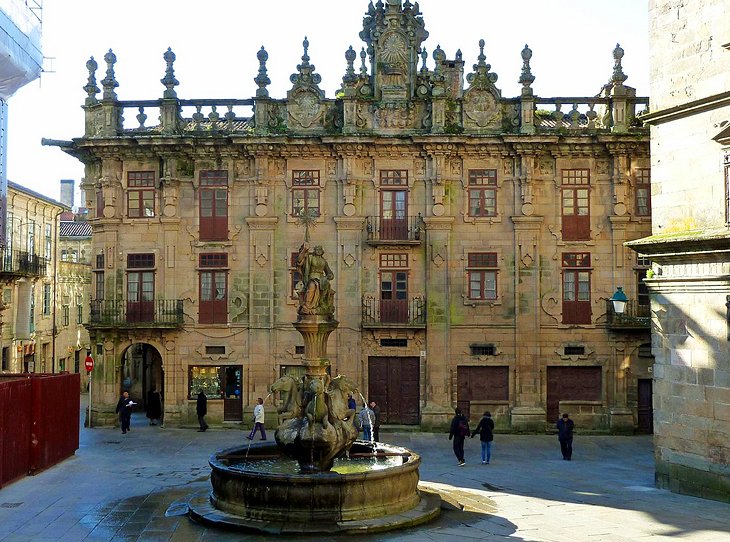
Casa do Cabildo | Aestudio / photo modified
The Casa do Cabildo is considered one of the finest examples of Baroque architecture in the Galicia region. This impressive aristocratic house was built in 1758 and is renowned for its exquisite facade that graces the Plaza de las Platerías. The Casa del Cabildo provided inspiration for Spanish author Valle-Inclán and is described in his story Mi Hermana Antonia.
The building was renovated in 2011 and converted to an exhibition space; the monument is part of the association of museums in Santiago de Compostela. The Casa do Cabildo is open to the public when art exhibitions are hosted here.
9. Museo do Pobo Galego
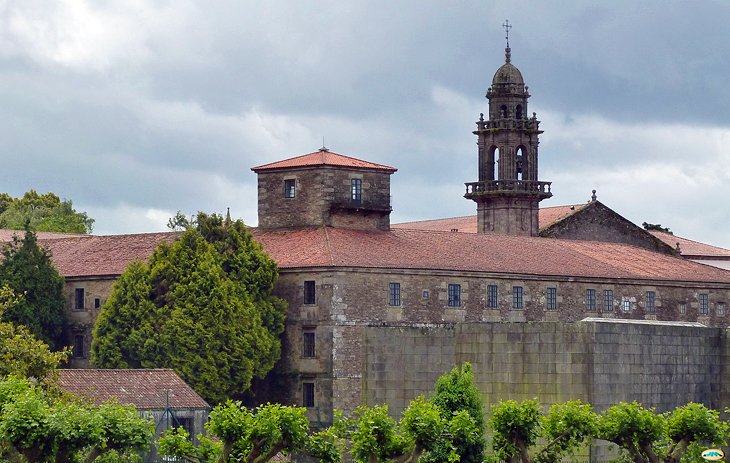
Museo do Pobo Galego | juantiagues / photo modified
Opened in 1976, the Museum of the Galician People (also known as Pueblo Gallego) is housed in the former convent of Santo Domingo de Bonaval. The exhibits illustrate the defining aspects of Galician culture, such as their relationship with the sea, the land, and each other. The permanent collections include exhibits about the evolution of Galician peoples from prehistory through modern day, seen through the tolls, trades, and growth of the economies within each community.
Visitors can also learn about traditional costumes, crafts, and art through exhibits of Galician clothes, music, painting, sculpture, architecture, and archaeology.
10. Cidade da Cultura de Galicia
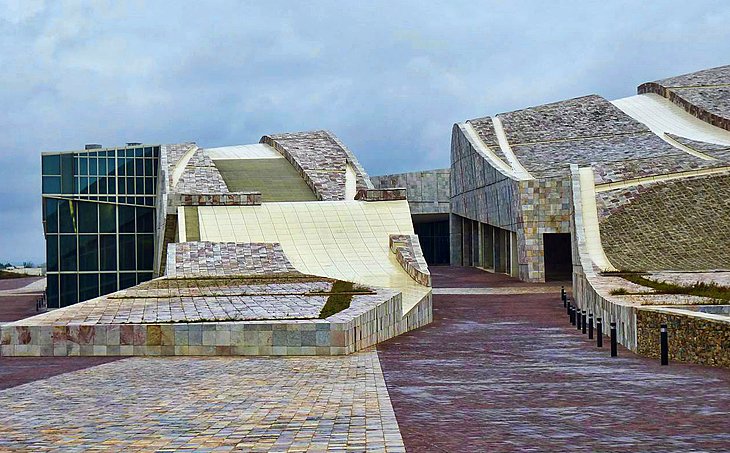
Cidade da Cultura de Galicia | juantiagues / photo modified
In stunning contrast to the historic buildings of Santiago de Compostela, this sleek, modern complex of buildings designed by Peter Eisenman brings the city into the 21st century. The City of Culture includes the Gaiás Centre Museum, a free museum that hosts temporary exhibitions, many of which are installations too large to be displayed in most venues.
There is also the Library and Archive of Galicia, a theater, and a central plaza for outdoor performances; English-speaking guided tours are available. The Cidade da Cultura is a short bus ride from the historic town center of Santiago de Compostela.
11. Colegiata de Santa María la Real de Sar
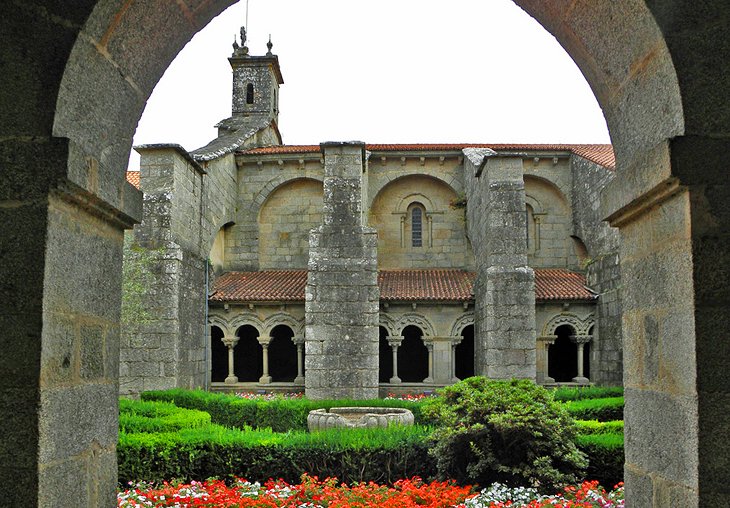
Colegiata de Santa María la Real de Sar | amaianos / photo modified
On the outskirts of town, this remarkable Collegiate Church of Santa Maria dates to the 12th century. The building has an interesting tower and flying buttresses on the exterior that were built in the 17th and 18th centuries. Typical of a Romanesque church, the floor plan has three naves separated by pillars, and the capitals are decorated with plant motifs. The sanctuary features barrel vaulting with ribbed arches, creating a graceful sense of spaciousness.
The interior is illuminated by the side windows and a rose window. Be sure to visit the cloister, a marvelous example of Romanesque architecture. The arcaded colonnades feature wonderful decorative details, and offer views of a peaceful garden. The church is open daily to the public for visits.
(thanks to: www.planetware.com)
Comments
Post a Comment